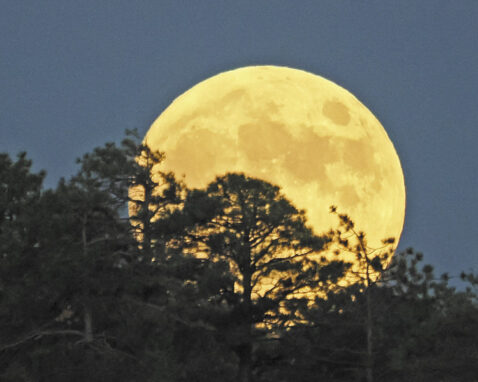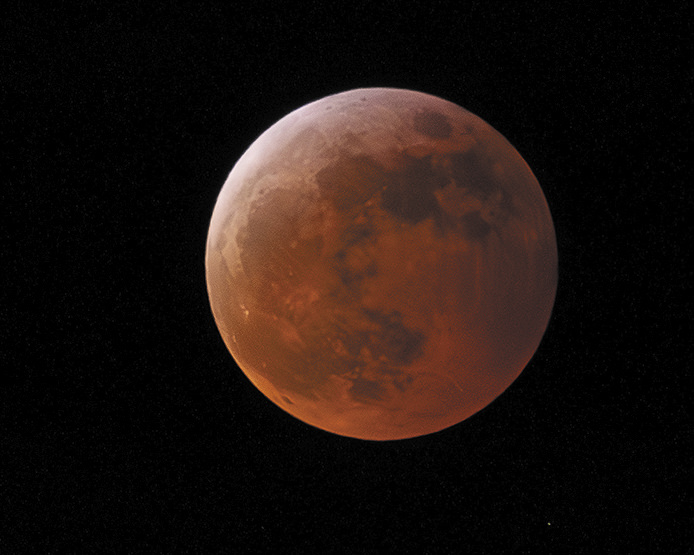Gerry Tietje
The moon has fascinated humankind throughout history. It marks the seasons of the year, and its cycle of lunar phases defines our month and week. The gravitational pull of the moon is primarily responsible for ocean tides, which influence maritime activities like commercial fishing and water sports. Sending men to the moon was America’s most ambitious goal of the 1960s. Who cannot remember those famous words uttered by Neil Armstrong, “That’s one small step for a man, one giant leap for mankind?”
The moon orbits our planet every 29.5 days at an average distance of 238,900 miles, completing one lunar cycle. The moon is illuminated by the sun during its journey around the earth and we see different amounts of the sunlit surface each night depending on the angle between the earth, moon, and sun. The lunar cycle begins with a new moon, which is dark and cannot be seen, waxes through phases to a fully illuminated moon, and then wanes through phases to the next new moon. When the moon is fully illuminated it is more difficult to discern the features of the moon. The mountains, valleys, craters, and dark maria (Latin for “seas”) are more visible during other phases of the moon, and are most pronounced along the “terminator,” a line that demarcates the boundary between the sunlit and shadow areas of the moon.
Europeans, Native Americans, and American colonists chose specific names for full moons each month, like Wolf, Strawberry, Flower, Pink, Corn, and Hunter’s. These names were popularized in Benjamin Franklin’s Poor Richard’s Almanack, which was published between 1732 and 1758, and are still in vogue today. The full moon closest to the fall equinox is known as the Harvest Moon and occurs on Oct. 6 this year. The Harvest Moon, because of its proximity to the equinox, rises around sunset for several evenings in a row. In an agrarian society this meant that farmers could continue harvesting crops late into the evening by the light of the moon, which led to its moniker. This year’s Harvest Moon is also a “supermoon,” so it will appear a bit larger and brighter than normal when it rises on Oct. 6 because it is closer to the earth, about 228,000 miles away.
It’s also fascinating to observe the moon during a total lunar eclipse. This phenomenon transpires when the earth passes between the sun and the moon, casting a shadow on the surface of the moon. This can only happen during a full moon when the earth is on the opposite side of the earth from the sun. As the moon darkens to its greatest extent it appears as a dark reddish ball, or Blood Moon. A total lunar eclipse, for a specific location on earth, occurs on average every 2.5 years. The next one that residents of SaddleBrooke Ranch will experience will be on March 3, 2026, so mark your calendars accordingly.




